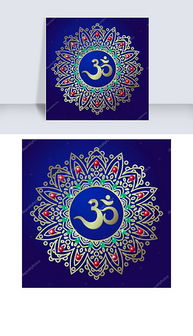
aum om symbol meaning
The “Aum Om” symbol, often seen in Hinduism, Buddhism, and other Eastern religions, holds a profound significance and is deeply revered by millions around the world. In this article, we will delve into the various dimensions of the Aum Om symbol, exploring its origins, meanings, and its role in different cultures.
Origins of the Aum Om Symbol

The Aum Om symbol is believed to have originated in ancient India, where it was used in various religious and spiritual practices. The symbol is composed of three distinct parts: the “A,” “U,” and “M,” which are pronounced as “Aa,” “Uu,” and “Mmm,” respectively.
According to Hindu tradition, the “A” represents the waking state of consciousness, the “U” represents the dream state of consciousness, and the “M” represents the deep sleep state of consciousness. Together, these three sounds represent the entire cycle of life and death, as well as the infinite nature of the universe.
Meanings of the Aum Om Symbol

The Aum Om symbol carries several meanings, each of which is deeply rooted in the spiritual beliefs of those who use it. Here are some of the key meanings associated with the symbol:
-
Divinity: The Aum Om symbol is often considered to be a representation of the divine. It is believed to be the sound of the universe, and by chanting the Aum Om mantra, individuals can connect with the divine presence within themselves and the world around them.
-
Creation: The symbol is also associated with the act of creation. It is believed that the universe was created from the sound of the Aum Om, and by chanting the mantra, individuals can tap into the creative energy of the universe.
-
Healing: The Aum Om symbol is often used in healing practices, as it is believed to have the power to purify the mind, body, and spirit. Chanting the mantra can help alleviate stress, anxiety, and other negative emotions, promoting overall well-being.
-
Protection: The Aum Om symbol is also considered to be a powerful protective force. It is believed that by wearing or displaying the symbol, individuals can be protected from negative energies and harmful influences.
Role in Different Cultures

The Aum Om symbol is not limited to Hinduism and Buddhism; it has also become a significant part of other Eastern religions and cultures. Here are some examples of how the symbol is used in different contexts:
-
Hinduism: In Hinduism, the Aum Om symbol is considered to be one of the most sacred mantras. It is often used in religious ceremonies, meditation, and yoga practices.
-
Buddhism: In Buddhism, the Aum Om symbol is associated with the Buddha and is often used in meditation and prayer. It is believed to help practitioners achieve enlightenment.
-
Jainism: In Jainism, the Aum Om symbol is used to represent the concept of non-violence and compassion. It is often used in religious ceremonies and meditation practices.
-
Sikhism: In Sikhism, the Aum Om symbol is used to represent the infinite nature of God. It is often used in religious ceremonies and meditation practices.
Symbolism in Art and Architecture
The Aum Om symbol has also found its way into art and architecture, where it serves as a powerful representation of the spiritual beliefs of the cultures that use it. Here are some examples of how the symbol is used in art and architecture:
-
Temples and Monasteries: The Aum Om symbol is often found in the architecture of temples and monasteries, serving as a reminder of the spiritual significance of the buildings.
-
Religious Art: The symbol is frequently used in religious art, such as paintings, sculptures, and murals, to convey the divine and spiritual aspects of the depicted scenes.
-
Personal Items: Many individuals wear jewelry or other personal items featuring the Aum Om symbol, as a way to express their spiritual beliefs and commitment to their faith.






